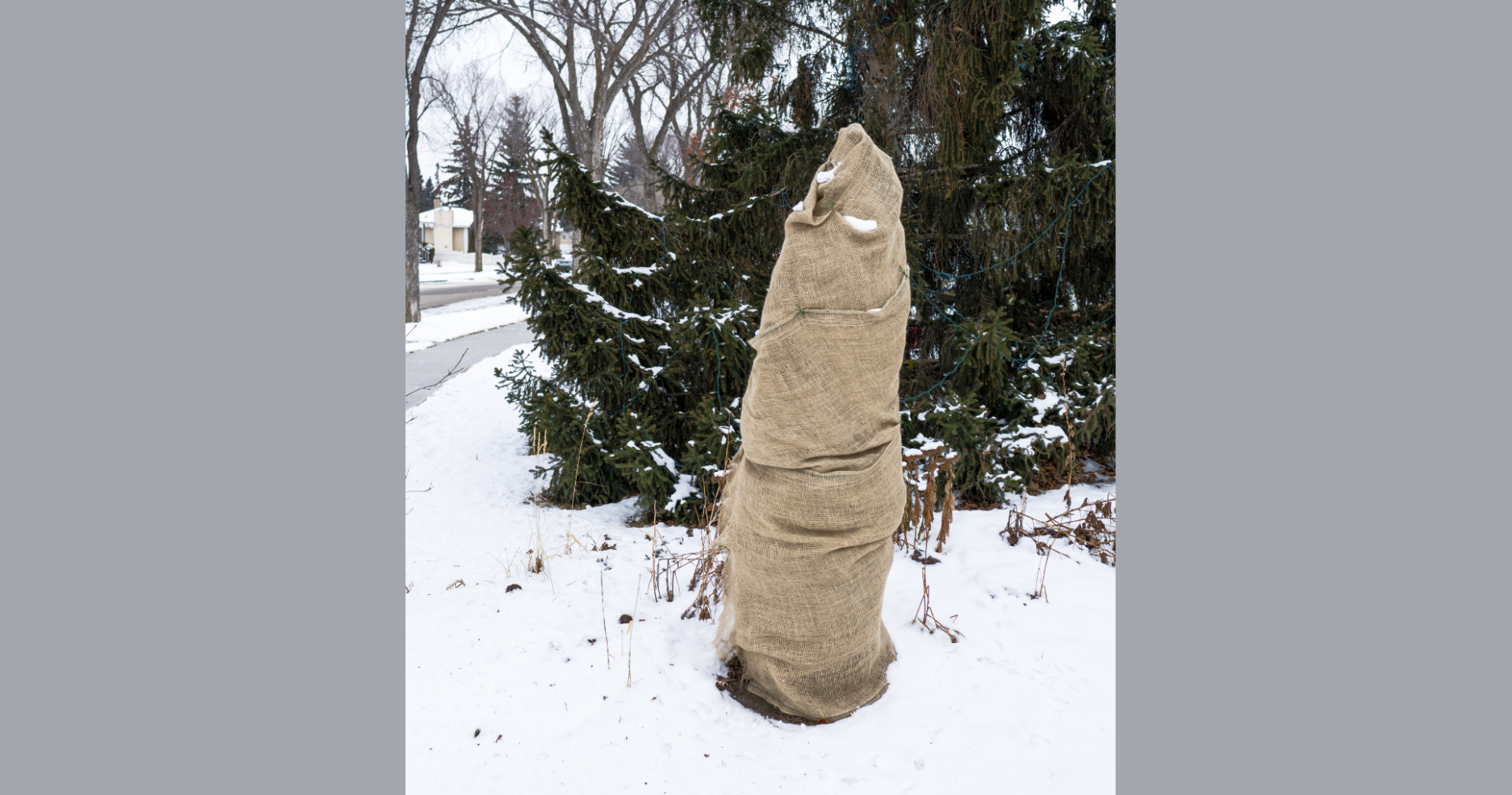
Protecting new trees and shrubs this winter
Even though it’s still fall and the weather is decent it’s time to think about protecting trees and shrubs. Winter can be devastating on new trees and shrubs that were planted this year. Listed below are some tips that will help protect them:
Make sure plants go into the winter season with the soil moist. Moist soils will hold more heat than dry soils and are less subject to frost penetration. Keeping plants well-watered going into winter will result in better root growth. Add an additional layer of mulch around trees and shrubs will also help prevent root injury from frost penetration. Avoid placing mulch directly against the tree trunk.
Winter desiccation:
Winter sun and wind can sometimes cause the foliage of evergreens to lose moisture that is not replaced while roots are frozen. Plants such as Alberta Spruce, Arborvitae, Boxwood and Rhododendron can be susceptible to this. The sides of plants exposed to wind and also sides most exposed to the sun are most subject to winter injury of this type. A layer of burlap placed over plants in late November or December will create a windscreen to help protect them. Burlap can remain in place until late Feb- early March.
Injury to thin-barked trees:
Sunscald or Southwest Injury can occur on cold, sunny, winter days. Bark on young trees heats up during the day to the point that growth activity starts to resume, then the temperature of the bark drops rapidly when the sun goes down. The quick drop in temperature kills the active tissue. To prevent Sunscald, wrap the tree with a tree wrap or use plastic tree guards. These will reflect the sun and keep bark at a more constant temperature. Put the tree wrap on anytime now and take it off in the spring.
